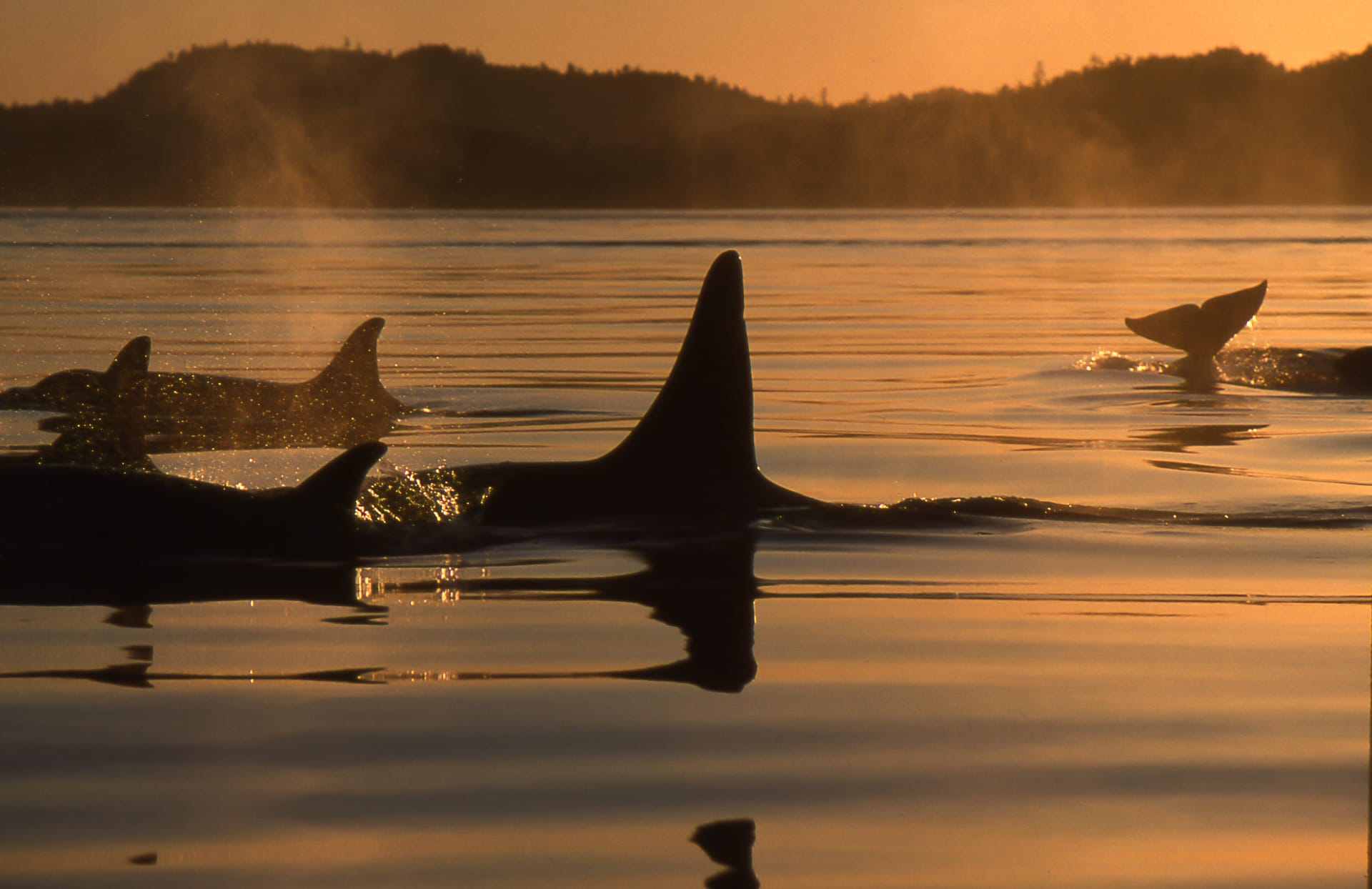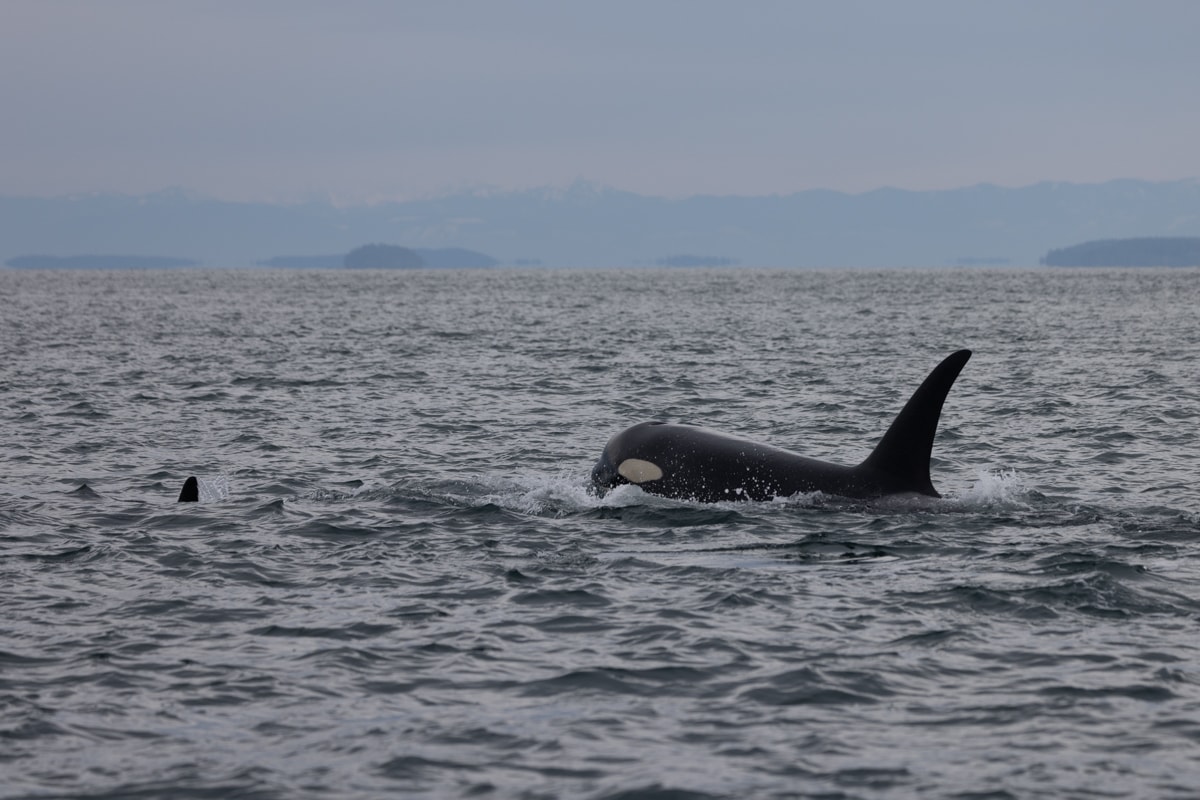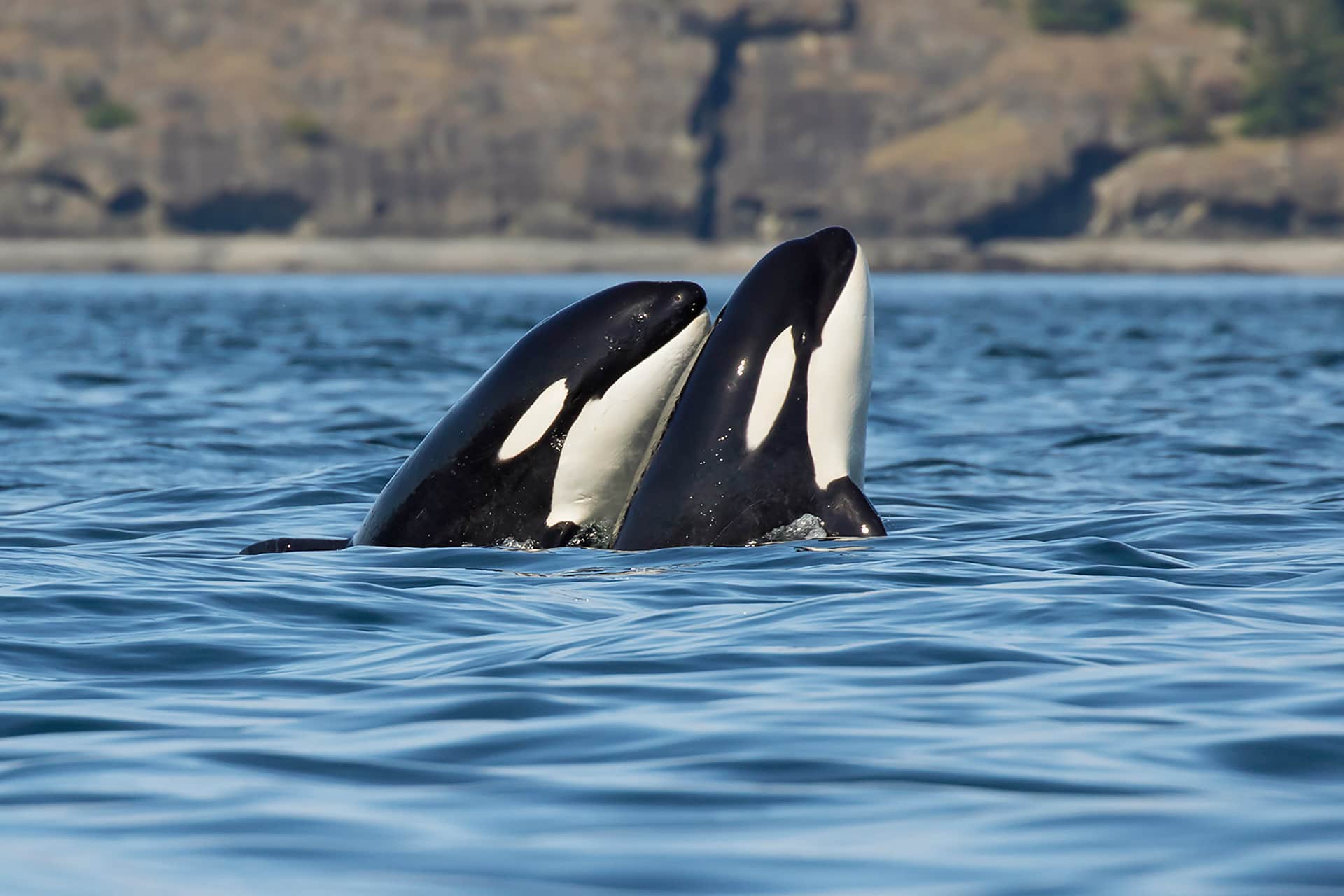
A 2021 government study found that when Northern and Southern Resident killer whales hunt for Columbia River Chinook salmon, they arrive at different times of the year and forage in different zones. Known by scientists as ‘partitioning,’ this helps avoids direct competition for resources. Now in a 2023 research study, U.S. and Canadian government scientists find striking differences between hunting success in these two populations. Could this be directly linked to environmental health, including salmon abundance in their vastly different home ranges?
What was the study?
Over several years, scientists temporarily attached non-invasive suction cups with digital recording tags to known individual resident killer whales (learn more about these tags here.) The team deployed 30 tags on males (18 Northern and 12 Southern Residents) and 21 on females (11 Northern and 10 Southern Residents.)
These tags recorded 187 hours of dive data. By analyzing these dives, scientists could identify the whales’ behavior. For example, dive depth can indicate whether hunting or traveling, especially when paired with specific vocalizations recorded by the tag, which then helps determine the phase of the hunt. More shallow dives usually suggest resting, socializing, or prey-sharing behaviors.
Scientists could then cross-reference these digital recordings with the visual observations made by the team following the tagged animals. They also collected floating fragments of prey left behind to validate feeding events and to identify the prey type and species.

NOAA Fisheries researchers apply temporary suction cup tags to record sound levels experienced by Southern Resident killer whales.
What did they learn?
Although the tags showed similar prey-capture dive times, the difference in success rates was striking, especially for females. Northern Resident killer whale females were “257% more efficient” than their Southern counterparts, equating to “167% more prey per hour than Southern Resident killer whale females.”
Another notable finding was that these more efficient female Northern Residents spent 91% more time in prey capture dives than Southern Residents. So not only were they more successful per dive, but they spent more time pursuing prey.
The tags also revealed that the average prey dive was deeper for Southern than Northern Residents. And while energy usage was not a part of this study, the greater effort needed to dive to deeper depths to find prey would help explain the differences between dive frequency and prey capture success, with Southern Residents having to work harder for every meal.
One noticeable finding was that females with calves in both populations made fewer prey-capture dives than those without calves. However, this was far more significant in the endangered Southern Resident killer whale population, where no females with calves successfully captured prey while wearing a tag.
An earlier study found that female Southern Resident killer whales seemed more susceptible to vessel noise than males and were less likely to forage in the presence of boats. This could explain why prey-capture dives were not recorded for these endangered moms with calves.
"Their ecological and cultural knowledge is passed down the matriarchal line, but inherited wisdom is based on times past, not the ever-changing present."
What does all this mean?
Can environmental factors explain these differences in foraging success? The endangered Southern Resident killer whales forage in waters close to urban centers, with high vessel traffic and pollution levels. In addition, their primary prey, Chinook salmon, is also endangered. Conversely, Northern Resident killer whales forage in remote, less polluted, and less trafficked waters. Their prey, also Chinook salmon, is much more abundant in their more northern home range. Little surprise then that their population has grown steadily, whereas their urban cousins are flat-lining.
Continued below...
Another factor to consider is whether—as a recent study suggested—the Southern Resident killer whales’ environment is changing more rapidly than their ability to adapt. Their foraging strategies have evolved over thousands of years in times when their prey was rich and abundant with more pristine habitats. Human impacts over the last 100 years undoubtedly challenge these long-lived mammals. Their ecological and cultural knowledge is passed down the matriarchal line, but inherited wisdom is based on times past, not the ever-changing present.
Their resilience in the face of all this change is remarkable. Despite everything, they are holding steady at 74 whales, and we must do everything we can to help increase births and reduce premature deaths. Simply put, we must leave more fish in the sea. Well-fed whales would be more resilient to pollution and noise and less likely to succumb to disease, and their population could grow once again.





